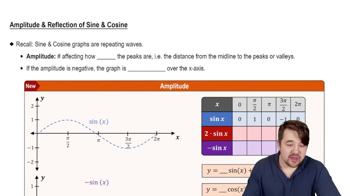Multiple Choice
Below is a graph of the function . Determine the value of b.
751
views
3
rank
 Verified step by step guidance
Verified step by step guidance Verified video answer for a similar problem:
Verified video answer for a similar problem:



 5:43m
5:43mMaster Introduction to Tangent Graph with a bite sized video explanation from Patrick
Start learning